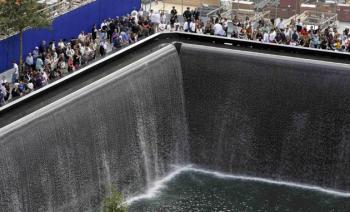Posted on September 8, 2011
Since the beginning of my engagement with the Archival Platform, I have written extensively on the issue of human remains, and the topics have varied from redress and restitution, 'sacred'Â spaces such as the Prestwich Memorial in Cape Town, the notion of human rights for the dead and also commemoration in this regard. As we commemorate Heritage Month, I have been encouraged to consider the idea of human remains as ancestors. In my work on sites, landscapes or collections that consist of the bones of the dead, I have observed a lot of contestation that is usually associated with ownership, and also the improvisation that is evident with regard to ways of commemoration by different role-players. However, I have not really engaged with the notion of the human remains as ancestors. Yet, it can be argued that the contestation regarding the subject of the dead has to do with issues of culture, identity, and also the politics of collective memory.
This also got me thinking long and hard about how things 'ancestral'Â are usually thought to concern only the 'indigenous peoples'Â of what used to be the colonised world, especially sub-Saharan Africa. Ancestral worship tends to dismissed being part of primitive belief systems who tend to associate the dead with the esoteric, thus deeming them to be 'sacred'Â. In this piece, this is a notion that I challenge, as I believe that ancestral reverence is a global phenomenon that is intertwined with belief systems, especially when it has to do with the physical remains of the dead or sites and landscapes where people died. In addition to this, I also discuss the way in which government machinery is mobilised to transform these sites, burials and skeletal collections as means of reconciling fragmented societies, while contributing to tourism when the human remains are reframed as heritage resources.

The Dalmatian-Bosnian border region in Eastern Europe is also considered as a memorial and sacred landscape, and the inhabitants on the Croatian side of the border perceive their surroundings in terms of ancestry and ownership of the territory. Ritual, commemoration of massacre victims and local people'™s memory is inscribed on the landscape, in the form of massacre sites and mass graves from conflicts. This narrative of healing and triumph has been deemed to be sacred. This is also evident with regard to the performance of commemorative rituals at sites of former suffering connected to diasporic movements, such as the Jewish youth voyages to Poland and the Nazi death camps. It can thus be said that these performances serve as the affirmation of political identities in the present.

Closer to home, the Matopo Hills of Zimbabwe, site of a struggle against the colonial conquest of the people of Zimbabwe, is articulated in the monumental burial site of Cecil Rhodes. This, however, is entangled with local narratives of the Matopo Hills as a powerful spiritual centre and residence of many shrines. Some of the shrines are also connected to anti-colonial struggle. The Matopo hills on the other hand, constantly reinterpreted and transformed, may be as such as a result of what has become termed 'the heritage effect'Â, where heritage is also used as a 'technology for healing'Â, and landscapes are transformed to guarantee reconciliation for future generations. It is also interesting how the Rhodes Memorial on the slopes of Devil's Peak in Cape Town, South Africa draws a different narrative. Is this perhaps the lack of the physical remains of Cecil John Rhodes in Cape Town that causes this difference?
In South Africa, the national Department of Arts and Culture has launched Heritage Month by 'Celebrating the Heroes and Heroines of the Liberation Struggle in South Africa'. The press release from the department states that this endeavour will help in reconnecting the nation with the rich and diverse collective liberation heritage. The theme is said to be designed to assist in inter-generational dialogue in order to shape the direction of the future, while celebrating South Africa as one of the greatest theatres of the struggle, pain, victory over an oppressive government, and the process of reconciliation and nation building. During this month, visits to various sites and memorials will serve to reinforce collective memory and promote national identity. The examples that have been illustrated above show that the dead, regardless of context, culture or tradition, are deemed to be sacred, and are revered for various reasons.
This sacralisation (becoming sacred) of the dead, their possessions and also sites of death can be thought to be a means to a restoration of a social fabric that may have been destroyed in the past. This is a global phenomenon that makes an attempt at finding closure, However, sacralisation is also characterised by a processes of exclusion and incorporation; and the placing of emphasis on some aspects and while silencing others. This then confirms that deeming something sacred means to remove it from the everyday, thus giving it special and symbolic value. When applied to the commemoration of violent pasts, this process is future-orientated as it serves to ensure that atrocities of the past do not happen again in the future.
Sources: Katharina Schramm. 2011. Introduction: Landscapes of Violence: Memory and Sacred Space, History and Memory, Vol. 23, No. 1